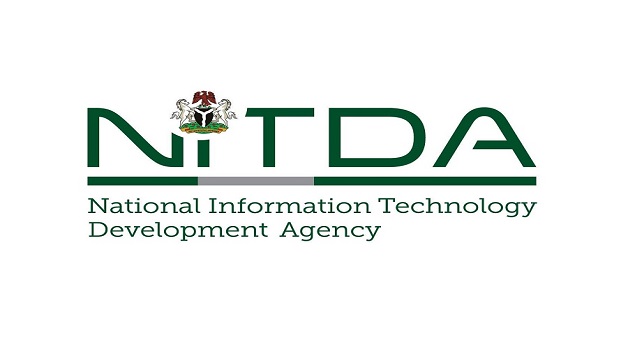E-Business
Kaspersky Uncovers New Cross-platform Threats

Kaspersky’s Global Research and Analysis Team (GReAT) has uncovered the emergence of three cross-platform threats and reveals three new strategies being employed by cybercriminals using the FakeSG campaign, Akira ransomware, and AMOS macOS stealer in its latest report.

The contemporary crimeware landscape is marked by constant evolution, as cybercriminals deploy sophisticated tactics across various platforms to exploit victims. Kaspersky experts analyse various threats, including cross-platform ransomware, macOS stealers, and malware distribution campaigns.
The latest cyber threat uncovered by GReAT is FakeSG, where legitimate websites are compromised to display deceptive browser update notifications. Clicking on these notifications triggers the download of a harmful file, and despite changing URLs, the path (/cdn/wds.min.php) remains constant.
The downloaded file runs hidden scripts, prompting users to update their browsers, while establishing persistence through scheduled tasks. Within the archive, a malicious configuration file exposes the Command and Control (C2) address, highlighting the sophistication of this campaign.
Akira, a new ransomware variant affecting both Windows and Linux systems, has swiftly infected more than 60 organisations globally, targeting retail, consumer goods, and education establishments. Its adaptability to work across platforms emphasises the broad impact on diverse industries.
Sharing traits with Conti, such as an identical folder exclusion list, Akira features a distinctive Command and Control (C2) panel with an old-school minimalistic design, fortifying against analysis attempts. This highlights the evolving sophistication of cyber threats.
The AMOS macOS stealer, surfacing in April 2023, and initially sold for US$1,000/month on Telegram, and evolved from Go to C, deploying malvertizing on cloned software sites.
Also using deceptive methods like malvertising, it infiltrates macOS systems, retrieving and compressing user data for transmission to the Command and Control server, utilizing a unique UUID for identification.
This reflects a growing trend of macOS-specific stealers exploiting potential vulnerabilities, deviating from their traditional association with Windows platforms.
“Adapting to the dynamic landscape of cyber threats is paramount to safeguarding our digital environments. The emergence of this new crimeware, coupled with the non-standard methods cybercriminals employ across diverse operating systems, underscores the urgency for vigilance and innovation in detection.
“Staying one step ahead requires a collective effort, emphasising the crucial role of continuous research and collaboration to fortify our defenses against evolving cyber threats,” comments Jornt van der Wiel, senior security researcher at GReAT.
E-Business
Microsoft Servers Hacked by Chinese Groups

Chinese “threat actors” have hacked Microsoft’s SharePoint document software servers and targeted the data of the businesses using it, the firm has said.

China state-backed Linen Typhoon and Violet Typhoon as well as China-based Storm-2603 were said to have “exploited vulnerabilities” in on-premises SharePoint servers, the kind used by firms, but not in its cloud-based service.
The US tech giant has released security updates in response and has advised all on-premises SharePoint server customers to install them.
“Investigations into other actors also using these exploits are still ongoing,” Microsoft said in a statement.
The firm said it had “high confidence” the hackers would continue to target systems which have not installed its security updates.
It added that it would update its website blog with more information as its investigation continues.
Microsoft said it had observed attacks in which hackers had sent a request to a SharePoint server “enabling the theft of the key material by threat actors”.
Charles Carmakal, chief technology officer at Mandiant Consulting firm, a division of Google Cloud, told reporter, it was “aware of several victims in several different sectors across a number of global geographies”.
Carmakal said it appeared that governments and businesses that use SharePoint on their sites were the primary target.
A number of adversaries who stole material encoded by cryptography were then able to regain ongoing access to the victims’ SharePoint data, he said.
“This was exploited in a very broad way, very opportunistically before a patch was made available. That’s why this is significant,” Carmakal said.
Carmakal said the “China-nexus actor” was deploying techniques similar to previous campaigns associated with Beijing.
Microsoft said Linen Typhoon had “focused on stealing intellectual property, primarily targeting organizations related to government, defence, strategic planning, and human rights” for 13 years.
It added that Violet Typhoon had been “dedicated to espionage”, primarily targeting former government and military staff, non-governmental organizations, think tanks, higher education, the media, the financial sector and the health sector in the US, Europe, and East Asia.
Meanwhile, Storm-2603 was “assessed with medium confidence to be a China-based threat actor”.
E-Business
NIMC Warns Nigerians of Fake NIN Website

National Identity Management Commission (NIMC) has issued a public warning that it is not associated with NINcard.com.

According to the commission, the website has been circulating online to offer services for Nigerians seeking National Identification Number (NIN) services.
NIMC, in a post on its official X account on Wednesday, said, “NINcard.com is not in anyway affiliated to NIMC. Stay vigilant!”
The warning was accompanied by screenshots of fake payment receipts and OTP request pages from the website, both of which were boldly stamped “FAKE” by NIMC to alert the public.
E-Business
NITDA, API Partner Against Harmful Online Content

National Information Technology Development Agency (NITDA), in partnership with the Advocacy for Policy and Innovation (API), has convened a one-day workshop in Abuja to advance dialogue on the draft Online Harm Protection (OHP) Bill to confront harmful online content.

The bill, a rights-based, locally rooted, and multi-stakeholder initiative, is aimed at addressing the challenges of the digital age.
The event, which held yesterday, brought together government officials, civil society, academics, digital platforms, and legal experts to shape a policy framework designed to combat online ills such as cyberbullying, disinformation, hate speech, digital exploitation, and gender-based violence, while safeguarding democratic freedoms and digital inclusion.
In his keynote remarks, Kashifu Inuwa, director general, NITDA urged a paradigm shift in the way society engages with digital technologies.
“For almost two decades, we have viewed digital technology through a consumer lens. But these technologies are not just products and services. They are transforming how we live, work, and interact. They shape our politics, our society, and our democracy,” he said.
Warning against unaccountable digital power in the hands of private corporations, the DG likened the digital journey to the tale of Alice in Wonderland, where initial fascination with innovation has given way to deeper concerns about privacy, autonomy, and manipulation by big tech platforms.
“We thought we were using Google, but now we realise Google is using us. Social media, once a tool of expression, has become a tool of surveillance and influence,” Inuwa noted.
He, therefore, emphasised the urgency of developing a democratic and accountable framework. He explained that following the 2021 Twitter ban, NITDA facilitated dialogue between the government and platform operators, leading to a Code of Practice that stressed Nigeria’s sovereignty and legal standards.
According to him, the same process birthed the multi-stakeholder steering committee and the OHP White Paper in December 2024, laying the foundation for the current legislative push.
Earlier in her opening remarks, Victoria Manya, co-founder, API, observed the moral and civic necessity of the bill.
Her words: “The internet did not break society, it merely revealed its unfiltered version. Every day, Nigerians are exposed to harassment, disinformation, exploitation, and even algorithmic violence. The OHP Bill is not a war on the Internet. It is a peace offering to its users, a social contract for a digital future that is safe, inclusive, and democratic.
“We cannot answer the question of algorithmic power with unchecked state control. We must answer it with shared, rights-based governance. This bill must not be written for the people, but with them.”

 E-Financial3 days ago
E-Financial3 days agoKuda Unveils New Wallet for Multiple Currencies

 Telecom3 days ago
Telecom3 days agoTelcos Resume SIM Card Sales after 2-Week Halt

 Telecom3 days ago
Telecom3 days agoNigeria, Others Achieve 84% Adult Mobile Phones Penetration

 E-Business3 days ago
E-Business3 days agoHow AI Alert by Airtel is Transforming Mobile Security in Africa

 E-Business3 days ago
E-Business3 days agoNITDA, API Partner Against Harmful Online Content

 Telecom2 days ago
Telecom2 days agoTelcos: How and Why Network Services have Been Poor

 Telecom2 days ago
Telecom2 days agoGlo Launches Nigeria’s First-of-its-kind Device Protection Plan

 News3 days ago
News3 days agoHorn of Africa Leaders Seek Enhanced Digital Integration for Increased Regional Growth



























